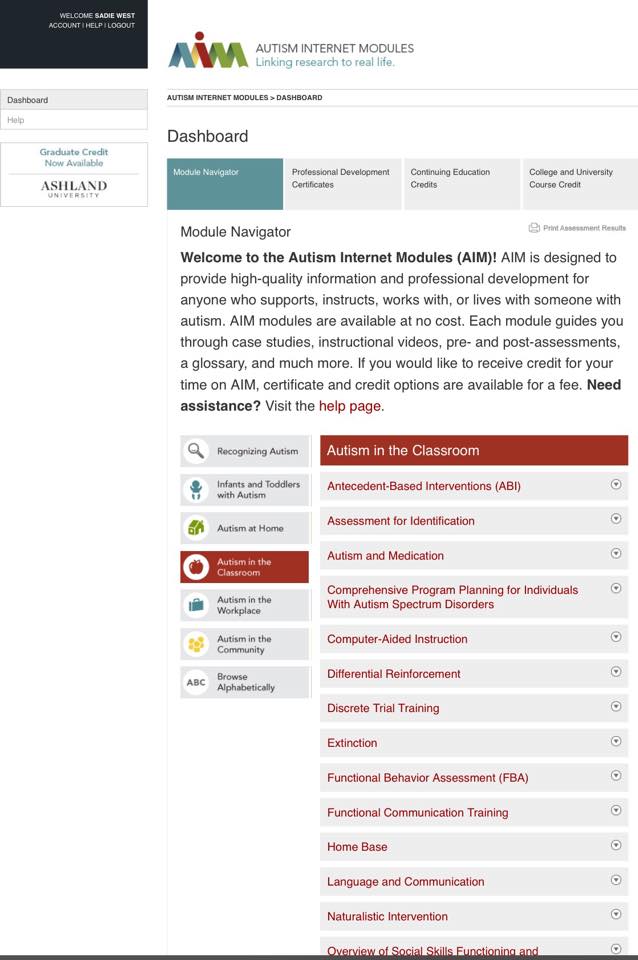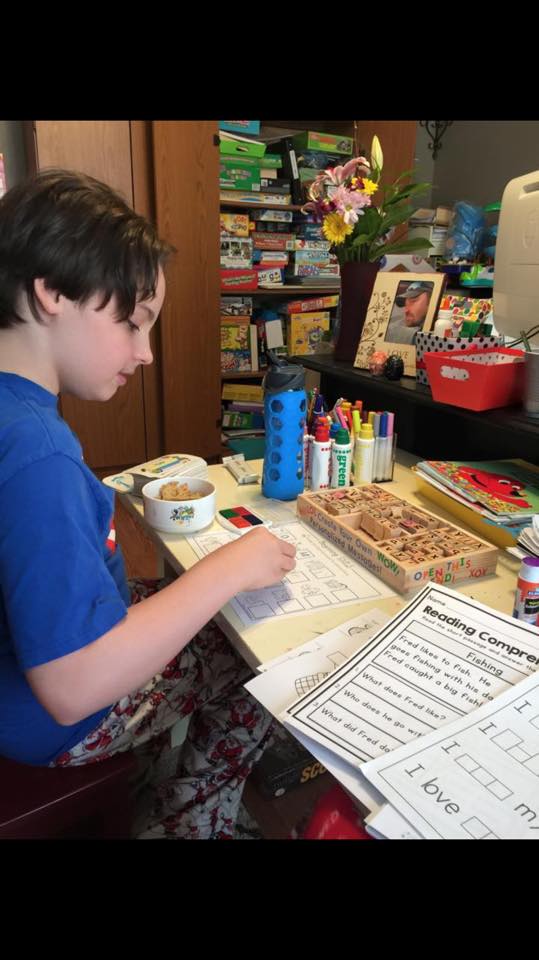 On average, our kids are in school for seven hours per day, five days a week. Show of hands — as you are reading this, how many of you know what kinds of strategies your children’s teachers are using to educate them in the classroom? We know what kind of supports our children require to be successful learners in the educational environment. We know some of our kids need sensory movement breaks or fidgets for their hands, weighted lap pads for their laps, adaptive seating to be able to sit and attend during large-group circle time. Some kids may need noise-reduction headphones to get them through the loud school day, or some may require a slanted writing board for their handwriting assignments. There are lists and lists of accommodations that can be made to help our kids to be successful learners. But how many of you truly know what strategies are being used to teach your children academics? And are those strategies evidence-based? Or are they emerging? Meaning, there is some research supporting said strategy but not quite enough to make it evidence-based. How do you find out this information if you are not familiar with it? Why do you even need to know?
On average, our kids are in school for seven hours per day, five days a week. Show of hands — as you are reading this, how many of you know what kinds of strategies your children’s teachers are using to educate them in the classroom? We know what kind of supports our children require to be successful learners in the educational environment. We know some of our kids need sensory movement breaks or fidgets for their hands, weighted lap pads for their laps, adaptive seating to be able to sit and attend during large-group circle time. Some kids may need noise-reduction headphones to get them through the loud school day, or some may require a slanted writing board for their handwriting assignments. There are lists and lists of accommodations that can be made to help our kids to be successful learners. But how many of you truly know what strategies are being used to teach your children academics? And are those strategies evidence-based? Or are they emerging? Meaning, there is some research supporting said strategy but not quite enough to make it evidence-based. How do you find out this information if you are not familiar with it? Why do you even need to know?
As an education advocate, I teach parents on a daily basis about evidence-based strategies. Eight out of ten parents that I ask have no idea what kinds of strategies are being used in the classroom. Here is why: if you are not an educator yourself or somehow associated with the educational field within your professional life, why would you know this info? Do we know what strategies are being used to educate our neurotypical children? Umm . . . not usually. We know if they have homework or a project due, and we monitor their grades via the online portal, but we don’t know if the strategies they are using in the classroom are based on brain-based learning, or if they are even differentiating strategies in the classroom. This is important info to dive into for all of our kids.
 I reassure the parents that I work with that many parents do not know this information and that, as our kids’ best advocates, we do need to know this information. We know our children the best, and all of us are advocates in one way or another, even if we don’t recognize ourselves as such. We attend our kids’ IEP meetings, we advocate. We take our kids to the doctor, we advocate. We school the stranger in the store who made a snarky comment about the meltdown that just took place, we advocate. We advocate in many different ways, every day.
I reassure the parents that I work with that many parents do not know this information and that, as our kids’ best advocates, we do need to know this information. We know our children the best, and all of us are advocates in one way or another, even if we don’t recognize ourselves as such. We attend our kids’ IEP meetings, we advocate. We take our kids to the doctor, we advocate. We school the stranger in the store who made a snarky comment about the meltdown that just took place, we advocate. We advocate in many different ways, every day.
I am an autism education advocate and a developmental therapist with Illinois Early Intervention. Additionally, I teach grad courses online on autism, brain-based learning and differentiation in the classroom. I have a master’s in special education, but I didn’t always professionally live in the education world. I also have a bachelor’s in business marketing and lived that life for years before my son was diagnosed with autism. When Kale was diagnosed with ASD, I knew in that moment that I needed to go back to school to learn the laws so I would know exactly what his rights were as a child with special needs. I had NO clue prior to his entering early childhood what an IEP even was or what that meant for him. I had a lot to learn, and I spent the next several years diving into special education law. I now spend my days teaching parents about the IEP process and how to best advocate for their kids, and I am going to tell you what you need to know about evidence-based education strategies
There are two main organizations that research evidence-based strategies for students with ASD. These organizations are The National Autism Center and the National Professional Development Center. These organizations have both released lists of strategies that have been researched and met certain criteria to be eligible for the categorization of evidence-based. Their findings are similar but different. Another phenomenal resource for educating yourself on evidence-based strategies is The Autism Internet Modules. To use these modules you are required to create a login, but they are 100% free. The modules are so informative and include step-by-step instructions on how to implement a strategy, case studies, handouts, learning standards, etc. They are an excellent resource to utilize ourselves as parents, to pass on to our children’s educators and therapists, and to pass on to other moms and dads.
So why do we need to know about strategies anyway? What’s the point? As your children’s best advocate, you need to know what kind of learners they are. How do they learn best? Are they visual learners? Auditory? Kinesthetic? So that when the difficult days are upon you, and the educational team brings you in for an emergency IEP meeting to discuss focus and attention problems, avoidance behaviors, social skills and situations that may arise with peers, you are armed and ready with the information to help support your child so that he or she can be a successful learner. It is also beneficial to know whether a certain strategy is evidence-based if you are requesting that it be trialed with your child in the educational setting. It bears more weight with the IEP team if it is categorized as evidence-based.
One important point I would like to make is that if a strategy is categorized as “emerging” and is not included in the evidence-based category, it does not mean the strategy is not beneficial for many students. It simply means that specific strategy does not have the necessary research backing it yet to meet the criteria established.
This information is valuable for those families who homeschool as well. Strategies can be used by parents within the home-based classroom just as successfully as teams are using them within the school buildings. I homeschool Kale, and we use many of the strategies that are discussed by both organizations I listed above. I know that Kale is a visual learner and he enjoys using the Token Economy Boards to complete his work. Over the years, the token economy boards have taken on different appearances, and at this point he only needs a written list of his work for the day to satisfy his need to know what’s next. We also utilize discrete trial teaching and structured teaching, priming, prompting, video modeling, extinction and naturalistic intervention. These strategies are built within our homeschooling days just as they were built into his days when he was in school. We have tried many strategies over the years, some were extremely successful and others not so much. The point of this is that there are many, many, many strategies to be tried for your child. So, if an educational team tells you they are out of ideas, please print out the lists from the websites I have included and take them to your IEP meetings. Brainstorm with your child’s team and see what strategies they have tried, which ones have not been tried yet, which ones have been successful and which ones did they not respond well to? This will give you even more understanding of the type of learner your child is. This information will help you advocate for your child and help the rest of your child’s educational team support your child in the classroom environment, so that your child can be a successful learner and enjoy time at school.
This article on evidence-based learning is a valuable resource with several tables included. Pay special attention to the learner matrix key. This table includes strategies that can improve skills within specified developmental domains. I find it to be extremely beneficial when choosing a strategy for a student.
Just as we spend hours on end researching specific supplements, diets or protocols for our children, it is my opinion that time spent on understanding how our children can be or are successful in the classroom is of equal importance. The knowledge gained from this understanding has helped me be the best advocate I can be for our learners with ASD.
~ Guardian
For more by Guardian, click here.



















The link to the article on evidence based learning is not working. Do you have a pdf?
It looks like they changed the URL. I replaced it with a new one. Try it now.